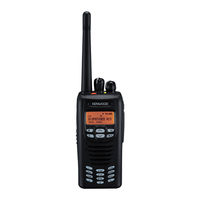Kenwood NEXEDGE NX-411 Manuals
Manuals and User Guides for Kenwood NEXEDGE NX-411. We have 4 Kenwood NEXEDGE NX-411 manuals available for free PDF download: Function Reference, Service Manual, Instruction Manual
Kenwood NEXEDGE NX-411 Function Reference (608 pages)
Brand: Kenwood
|
Category: Two-Way Radio
|
Size: 8.66 MB
Table of Contents
Advertisement
Kenwood NEXEDGE NX-411 Service Manual (99 pages)
900MHz DIGITAL TRANSCEIVER
Brand: Kenwood
|
Category: Transceiver
|
Size: 3.16 MB
Table of Contents
Kenwood NEXEDGE NX-411 Instruction Manual (44 pages)
800MHz DIGITAL TRANSCEIVER; 900MHz DIGITAL TRANSCEIVER
Brand: Kenwood
|
Category: Transceiver
|
Size: 0.48 MB
Table of Contents
Advertisement
Kenwood NEXEDGE NX-411 Instruction Manual (44 pages)
800MHz DIGITAL TRANSCEIVER, 900MHz DIGITAL TRANSCEIVER
Brand: Kenwood
|
Category: Transceiver
|
Size: 0.49 MB
Table of Contents
Advertisement



